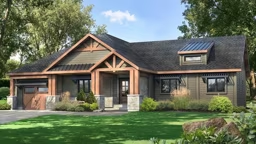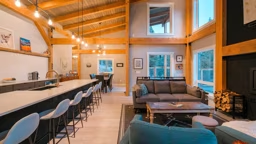
Photo: seqoya - stock.adobe.com
When it comes to buying land, there are some essentials you need to know. To help check those boxes, we’ve posed these points in the form of questions. Here are the basics you should ask:
How will your home’s design fit with the size, shape and topography of the land?
The more you change the natural terrain, the more it will cost.
Will a land purchase interfere with your loan?
Often, it’s advisable to have land in hand — perhaps even holding a free-and-clear title — before you apply for a loan. You even may be able to use it for collateral.
Are there land-use restrictions?
Whether you want to install a wind turbine or raise fainting goats, make sure your prospective land can legally support your chosen lifestyle.
Is the land in a flood zone?
If it is, you may need specialized insurance. The last thing you want to hear is that it’s not insurable at all.
Are there special covenants or architectural review board requirements?
Homeowners’ associations (HOAs) can impose their wishes on the exterior look of your home. Make sure you can build what you want.
Are there easements or setbacks?
Easements, like “easement by necessity” or “utility easements” can provide others with legal rights to use and even build on your property. Setbacks (often related to proximity to a body of water) can restrict where you situate your home on the land.
Is the title clear without liens or complications?
A trip to the local building authority or courthouse records department can shed light on whether any entity has a legal claim to the land you’re looking at.
Are utilities available? Where are electrical, phone, water, gas and sewage provisions?
If you need to run your own power lines or dig for a well, make sure to factor these costs into your budget.
Are soil conditions conducive to development? For example, is the region known for expansive soils? Will it pass a perc test?
A percolation (perc, for short) test ensures the health and safety of a septic field. It’s a small fee to pay now for peace of mind later on.
Are the roads and bridges leading to the property in good condition?
Not only is this important for the safety and enjoyment of your home in the long term, it’s also something you need to consider to ensure your timber frame package can be delivered to the job site.
What is the projected growth rate of the area? What zoning plans or changes may affect it?
Nothing is worse than owning your own little piece of unspoiled nature and then a developer puts up a planned community or a shopping mall next door. Do your research — check with the state or local zoning commissions to see what the future may hold for the region.
How far away are first responders and other services, like hospitals, grocery stores and gas stations?
This should be a major consideration in your search for land, especially if your timber frame will be your forever home. Trust us — you’ll want to have these necessities nearby.
Will you feel at home there?
There’s no authority to ask or research to conduct here — this is a question that only you can answer. If you feel calm and content as you walk the property (and it checks all the boxes of the previous 12 questions), then this could very well be “the one.”
The More You Know
When taking on a project as large and expensive as building a home, it’s vital to gain as much professional insight as possible. This starts with step one of the process: Purchasing land.
To give you a jump start, we consulted with Brian Sielaff, founder of Idaho-based Tamarack Grove Engineering. Brian has more than 25 years of experience engineering log and timber frame homes and is licensed in all 50 states and all Canadian provinces.
According to Brian, one of the smartest moves you can make is to employ a contingency agreement — usually for 60 to 90 days — with the seller to discover if it’s a buildable parcel before buying the land outright. Even he’s had surprises during this phase.
“My wife and I were looking to build, and we found property that seemed promising,” Brian shares. “But after looking into it, the county required unusually deep setbacks. We discovered we would have to put in a long driveway that would cost more than $250,000 to install.”
Knowing the buildability of a piece of property before you buy is also important. Brian recommends investing in a soil analysis to ensure that you won’t run into issues. For example, in the western U.S., it’s not uncommon to find expansive soil, which absorbs water and expands as a result. This type of soil is known to cause cracks in foundations and floors, potentially resulting in expensive repairs.
Having the facts in hand before you commit can save you a lot of trouble (and money) in the long haul.
See Also: What You Need to Know to Build Remote











